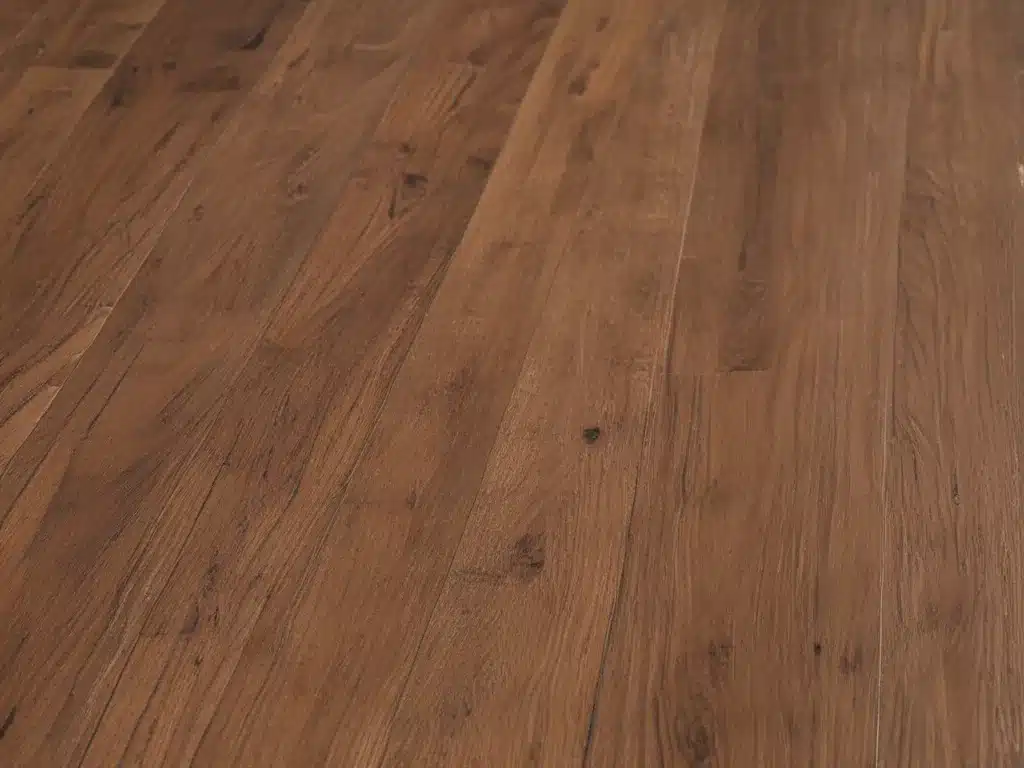Introduction
Hardwood floors are a beautiful addition to any home, but keeping them clean and well-maintained can be a challenge. As a homeowner, I understand the importance of preserving the natural beauty and longevity of hardwood floors. In this article, I will guide you through the process of cleaning hardwood floors without causing any damage to their surface.
Understand the Different Types of Hardwood Floors
Before diving into the cleaning process, it is crucial to understand the different types of hardwood floors. Not all hardwood floors are created equal, and the cleaning methods may vary depending on the type of wood and finish.
- Solid Hardwood Floors: These floors are made from solid planks of wood and can be sanded and refinished multiple times.
- Engineered Hardwood Floors: These floors consist of a thin layer of hardwood veneer atop a plywood or high-density fiberboard core. They are more resistant to moisture and temperature changes.
- Pre-finished Hardwood Floors: These floors have a protective coating applied at the factory, which helps to resist scratches, stains, and wear.
Understanding the type of hardwood flooring in your home will help you choose the appropriate cleaning methods and products.
Prepare for Cleaning
Before starting the cleaning process, it is essential to prepare your hardwood floors properly. Follow these steps:
- Remove Furniture and Clear the Area: Move any furniture or obstacles out of the way to ensure you have easy access to the entire floor surface.
- Sweep or Vacuum: Use a soft-bristle broom or vacuum cleaner with a hardwood floor attachment to remove any loose dirt, debris, or pet hair. This step is crucial to prevent scratching the surface during the cleaning process.
- Check for Spills or Stains: Identify any spills or stains and treat them accordingly before proceeding with the overall cleaning. Remember, it is easier to remove fresh stains than set-in ones.
Cleaning Methods
When it comes to cleaning hardwood floors, there are several methods to choose from. Here are some effective and safe techniques:
1. Dry Cleaning
Dry cleaning is an excellent option for regular maintenance and can be done using a microfiber mop or a vacuum cleaner with a hardwood floor attachment.
- Microfiber Mop: Use a dry microfiber mop to gently sweep the floor, capturing dust, dirt, and hair without leaving any residue behind.
- Vacuum Cleaner: A vacuum cleaner with a hardwood floor attachment can effectively remove dirt and debris from crevices and hard-to-reach areas.
2. Damp Mopping
For a deeper clean, damp mopping is a safe and effective method. However, it is crucial to use the right cleaning solution and follow the proper techniques.
- Cleaning Solution: Use a hardwood floor cleaner specifically designed for your floor type. Avoid using harsh chemicals, vinegar, or ammonia-based cleaners, as they can damage the finish or cause discoloration.
- Mop: Choose a dedicated mop for hardwood floors, preferably one with a removable and washable microfiber pad.
- Technique: Dampen the mop pad with the cleaning solution, but avoid saturating it. Mop in sections, using a back-and-forth motion, and rinse the mop pad frequently to prevent spreading dirt and grime.
3. Steam Cleaning
Steam cleaning is an effective and eco-friendly method for deep cleaning hardwood floors. However, it should be used with caution, as excessive moisture can damage the wood and seep into cracks or seams.
- Steam Mop: Use a steam mop specifically designed for hardwood floors. These mops use hot steam to loosen and lift dirt and grime without the need for harsh chemicals.
- Technique: Follow the manufacturer’s instructions carefully, and avoid letting the mop sit in one spot for too long to prevent moisture damage.
Maintenance and Care
To keep your hardwood floors looking their best, regular maintenance and care are essential. Here are some tips to consider:
- Sweep or Vacuum Regularly: Frequent sweeping or vacuuming will help prevent dirt and debris from accumulating and potentially scratching the surface.
- Use Mats and Rugs: Place mats or rugs at entryways to trap dirt and moisture before they are tracked onto the hardwood floors.
- Avoid Excessive Moisture: Hardwood floors can be damaged by excessive moisture, so be cautious when mopping or cleaning spills. Use a dry or slightly damp mop, and wipe up any standing water immediately.
- Refinish or Reseal: Over time, the finish on hardwood floors may become worn or scratched. Consider having your floors professionally refinished or resealed to restore their luster and protect them from further damage.
Common Mistakes to Avoid
To ensure the longevity and beauty of your hardwood floors, it is important to avoid these common mistakes:
- Using Harsh Chemicals: Harsh chemicals, such as bleach, ammonia, or abrasive cleaners, can strip the finish and dull the wood’s natural shine.
- Excessive Water: Too much water can seep into the wood and cause warping, cupping, or other types of damage.
- Walking on Floors with Shoes: Dirt, grit, and debris on the soles of shoes can scratch and scuff the surface of hardwood floors.
- Dragging Furniture: Always lift and carry furniture when moving it, rather than dragging it across the floor, to prevent scratches and gouges.
By following these guidelines and avoiding common mistakes, you can ensure that your hardwood floors remain in pristine condition for years to come.
Conclusion
Cleaning hardwood floors without damaging the surface is a matter of using the right techniques, products, and tools. By understanding the type of hardwood flooring in your home, preparing the area properly, and choosing the appropriate cleaning method, you can maintain the beauty and longevity of your floors. Remember to prioritize regular maintenance, avoid harsh chemicals and excessive moisture, and seek professional help if needed. With proper care, your hardwood floors will continue to be a stunning and long-lasting feature in your home.







